Primulus is short-seater - one of the best decorative flowering plants, which can be grown both in the room pot and in the flower bed. Early primrose appears on the flowerbed when it still did not completely reach the snow, and blooms until the middle of the summer. Especially spectacular looks in the open ground primrose a short-seater mix - a set of perennial species with a different color of flowers lined with a solid bright "floral carpet". How to plant a beautiful blooming culture? How to properly care for arrogant short-consuming? What way is it better to multiply the culture? All detailed information is in this selection of material.
Primula Short Suitable, Plant Description
- An herbal low plant, introduced, belongs to the family family, for which it is often called "primrose". The Latin name "Primula" also denotes the word "first", which is explained by the early terms of the flowering of many years of culture, blossoming one of the first flowering, sometimes even in the period when it did not completely reach the snow.
- The range of distribution of the genus Primulus is wide and occupies all moderate climatic zones of Asia, North America and the country of Central Europe.
- A long-term blooming primer is short-consumable, as prompts the name of the species, grows by a low bush, with a short, practically not noticeable, stem (hence the other name - "ignorable"). The plant reaches a height from 5 to 20 cm.
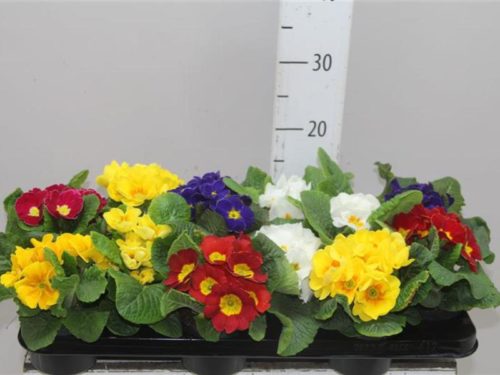
- Rhizome at primroses is short, but thickened and well branched through the cord-shaped roots.
- Leaves are oblong, green, with cloths around the edges. A distinctive feature of the short-considerable primrose is a wrinkled, not a smooth sheet plate, published from the bottom. The leaves in the chest of primroses form a lush root rosette.
- Not large (2-4 cm in diameter) Numerous Flowers Primulutes are short-consumable collected in seating inflorescences, as in miniature bouquets. Separately taken flower, especially not completely blossomed, resembles a bell or a "gramophone".
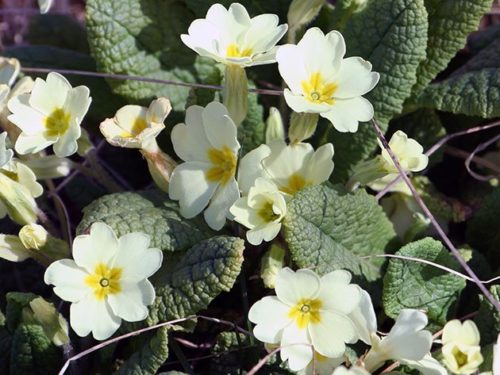
- Primulus flowering period is quite long: it starts in the spring and lasts almost until the middle of the summer. Color colors are very diverse and sometimes yellow, white, purple, pink and other colors. The flower tube zev is usually always painted in yellow.
- The fruit is represented by a box, oval shape.
- Primulus is short-consumable, referred to as a regular or ordinary, is considered a rigorous frost-resistant plant. Flower prefers scattered sunlight and fertile light soil.
Primula Short Suitable, Interesting Facts
- Primula is short-consumable is grown both in open ground and in flower pots, in room conditions.
- Most popularity in landscape design uses a short-seater mix, i.e. Blend, different color, colors. Such fireworks of paints and shades, pleasing a long period of time, will not leave anyone indifferent.

- In our country, flower culture was brought from China. In Europe, cultivate the flower began from the 16th century. Since then, the popularity of perennial only increases. And in England, for example, the annual exhibitions of blooming arrows are held, representing an unforgettable and colorful spectacle.
- In nature, this type of primrose can be found on the edge of the forest, open glades or near the Alpine Puddles.
- Flower of primulus is known since ancient times. So, in ancient Greece, individual types of primroses were considered medicines, and in Scandinavia the plant was jerkingly called the "clavies", which, according to the legend, the goddess of fertility opens the spring season. The Germans were also romantically called the promium "clavies", but they were intended for young girls, and were considered to be keys to marriage. Some people even included primulus in the preparation of a love drink.
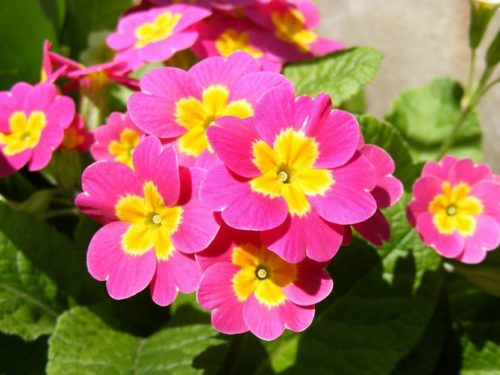
Primulus Short Suitable, landing and care at home
Primulus is short-consumable grows perfectly in room, home environment and does not require complex care. Moderate watering, good lighting and cool premises - here, perhaps, the main requirements of the flower culture. Consider key conditions for the cultivation of many years of primroses in a flower pot.
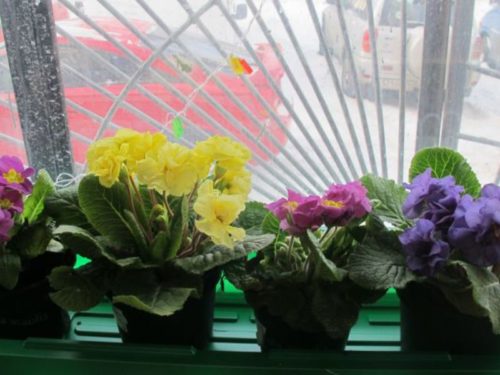
Primula Short Suitable, location and lighting
- The light-lubricant primer is short-seater loves well-lit place, but without direct sunlight.
- The best condition for primroses is scattered sunlight. In this regard, the pot with a flower is best placed on the windowsill with the eastern or western side of the room. If the flower is located on the south side, it is necessary to move it away from the window or "sharpening" by other indoor plants. You can also use the northern side windows, subject to sufficient lighting.
Primula Short-Suitable, Temperature Mode
- Plant prefers moderate heat in the room, within +12 to +20 0WITH.
- In the winter and spring period, when the process of bootonization and flowering begins, cold-resistant arrogant primrose needs a cooler temperature. Optimally, maintaining mode, no more than +12 0With, but not lower than +8 0C. It is precisely those, low, temperature indicators are closest to natural conditions, and provide long and abundant flowering of many years of culture.
- After flowering, if there is such an opportunity, the flower can be transplanted to the street, in open ground. And in the fall there are two options: leave a primer in a flower garden on the street as a garden flower or planted in a flower pot and "pick up" into the house.
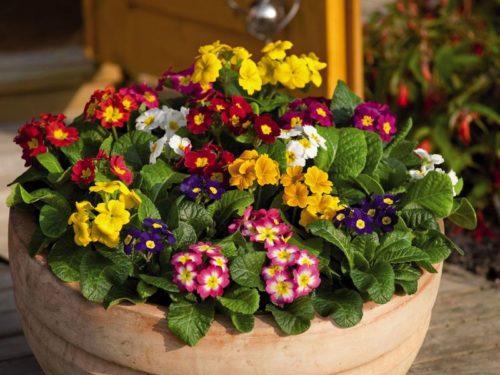
Primula Short Suitable, Soil
- Primulus is short-separated well develops in a lightweight, fertile, well-drained soil.
- For primroses, a ready-made mixture is suitable (for example, intended for geranium).
- You can also prepare the ground to plant the primrose. To do this, it is necessary to mix leafy ground with peat and sand in the same proportions. You can do without peat, using large river sand and land.
Primula Short Suitable, watering and humidity
- Rooming should be poured out the rescued (within a few days), soft water. Melting or rainwater is also suitable.
- In the period of bootonization and direct flowering, irrigation rate is somewhat more than the rest of the time. During this period, watering should be moderate, but regular. Do not allow moisture stagnation. The soil should always be slightly moistened.
- After flowering, watering is slightly reduced. At this time, it is necessary to water only when the upper layer of soil sounds up in a flower pot.
- Pour the plant under root, through the pallet or by immersion.
- As for the level of humidity, the short-consuming primrose prefers increased humidity.
- If the air in the room is too dry, the leaves are starting with the edges, and the flowering period is significantly reduced. To prevent similar negative manifestations, it is necessary to increase the humidity of the air in the room. To do this, you can use several ways: spraying near the plant or the construction of an artificial humidifier.
- For favorable development of the plant, a dry hot period, it is important to carry out a daily spraying near the leaf mass of primroses, without water from the flower.
- To simulate the operation of a humidifier near the flower can be put open container of water (or aquarium). Another option - to put a flower pot in a container of moist expanded clay. So, take advantage of their own primrose necessary amount of life-giving water.
Primula shortness, dressing and fertilizer
- Primrose feeding is carried out before the buds blooming plants. Until the moment of formation of buds, the plant is not fertilized, so as not to encourage the development of green mass and not "slow down" the flowering process.
- As top-dressings use any complete balanced fertilizer for flowering plants.
- Dressing make every two weeks until the end of the flowering period.
Primula shortness, planting and transplanting
- Given that the root system of surface type primrose, deep pot for planting flower is not needed. It is better to buy a flower container.
- On the bottom of the pot is laid drainage layer of expanded clay or fine gravel. Poured on top of the prepared soil mixture, and where the plant is planted.
- Perennial primrose, with the growth and development of root systems require periodic transplant.
- Primula transplant is possible only after the end of flowering, dividing the plant into separate outlet. You can save a lush bush primrose, not dividing it into parts, but the need for landing large flower pot.
Primula shortness, diseases and pests
- Bedroom primrose sick much less often horticultural crops. Most often, the problem is the wrong care culture (excessive watering, or, conversely, drying soil or air).
- Sometimes, primrose shortness may be affected by fungal diseases that cause rot the roots of the plant. To prevent death of the plant, an appropriate fungicidal preparation conditions adjusted care plant and, if necessary, flower transplanted to another, updated, ground.
- To primrose not hurt botrytis, ingress of water should be avoided (when watering) on \u200b\u200bthe leaves of the plant.
- The housing conditions plants may result mites, aphids and thrips. Pest control used insecticides ( "Akhtar", "Decis").
Primula shortness, planting and care in the open field
As noted above, shortness primrose - a universal flower, grown both in the room and on the street, in the garden or on a bed.
Caring for the "street" plant is not much different from home conditions, but, taking into account certain requirements of the cultivation of the flower in the open soil, there are certain nuances and features.
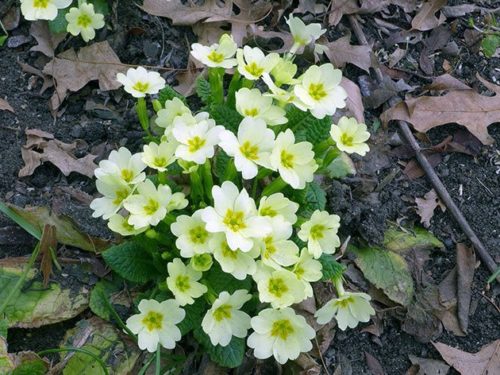
Primulus Short Suitable, Lighting and Watering
- Having planted primuor into open ground, it is better to choose a shaded area (semolot), protected from direct and sultry sun rays. For primrose, a place under the openwork foliage of trees and shrubs is suitable.
- Watering the garden plant is moderately and regularly. In the arid period and during flowering the rate of irrigation increases. In the fall of watering reduce.
- After watering, the ground around the plant is neatly loose. Weed grass are removed as germination on the site.
NSrimula Short Suitable, feeding and fertilizer
- Primulu is desirable to "feed" during its flowering by organic fertilizers. For this, it will suit, for example, a solution of bird litter, humid or compost.
- In the period after flowering, it is possible to "support" a plant with mineral feeders, for example, a solution of ammonia nitrate.
- In general, Introduces favorably respond to frequent (1 time in 2 weeks) mineral (nitroophosphorus-potash) feeding during the entire growing season. The only condition is to make them less concentrated than this is indicated in the instructions and do not abuse nitrogen-containing complexes. Nitrogen perfectly stimulates the growth of green mass, but, unfortunately, slows down and reduces the flowering of perennial.
NSrimula Short Suitable, Diseases and Pest
- In the garden, in the open soil, Introduces can be attacked by pests or various kinds of diseases.
- Most often, Introduces may be affected by such diseases as: mildew, rotting root and stem, rust, anthracnose, leaf spot.
- The fungal spotting causes the appearance on the leaves of lags of pale stains, which over time become brown and covered with a whitish touch. The affected leaves dry out, and the primrose ceases to bloom. To get rid of fungus, sick leaves are cut off, and the plant itself is treated with fungicide. Suitable solution of Fundazola, topxin or cinet.
- From the pests most often occurs a web tick, aphid, nematodes, whils, fleece and slugs. Insecticidal preparations are used to combat insects ("Aktellik", "Ragork"), slugs or beetles are collected manually.
- As preventive measures warning the development of diseases and the appearance of pests, the plant is treated twice (in spring and after flowering) burgundy liquid or nitrafen drug.
- In any case, to complete "recovery", it is impossible to carry an infected plant into the house, otherwise you can "infect" other indoor flowers.
Primula Short Suitable, Preparation for Winter
- After flowering, Introduces the Green Mass. During this period, until the winter, it is not necessary to cut a sheet outlet. Furious leaves for winter will become natural shelter of the plant. In the spring, old leaves are cut.
- In the regions with a warm, mild climate, the short-consuming primary absolutely does not need shelter for the winter. But in the area with harsh winters, it is better to cover the pomp with a purestnik, spray with foliage or straw, a layer of about 10 cm.
Primula shortness, planting and transplanting
- The landing of primroses into open ground is carried out, as a rule, early spring, although the summer landing of perennial is also practiced. In the latter case, for successful rooting, it will take regular watering of culture.
- With group boarding of primors, it is best to place seedlings close to each other (10-20 cm) so that in the expanding of bushes, there are no open spaces.
- For the landing of bushes, primroses are preparing shallow wells, shedding them in advance.
- After planting the soil compact and pour out again.
- Given the ability of garden primrose to grow, every 4-5 years, the perennial is dismissed, thus rejuvenating it. The procedure is carried out in spring or early autumn.
- When transplanting the plant, the uterine bush is abundantly watered with water, digging, after which they are divided into child sockets (with a knife), which are planted for a new place. The most important condition for dividing the curtain is to leave at least one renewal point at each separated part. Sections of sections can be additionally sprinkled with wood ash.
- After transplanting bushes, the short-considerable primrose is watered with water.
Primulus short-satellite, reproduction of the plant
Primulus can be multiplied by seeds, root cuttings and the division of the bush.
Vegetative way to reproduction of a short-seater bush
- Decision Kistica Primories on child sockets is a simple and affordable procedure, while young plants quickly come out in a new place.
- This method is usually applied by transplanting highly born 3-4-year-old embankments of primers (detailed information in the "Transplant" section).
- The transplant and division of the bush is carried out usually after flowering primroses (in August-September). Thus, it is possible to simultaneously rejuvenate adult bushes of perennial and get young copies.
A vegetative way of reproduction with cuttings (sinewit shoots) short-considerable primroses
- This method is applied when the bunch of primroses has a single outlet and the root system is not well developed.
- To root the stuffing shoots, at the base of the root cervix separate the pets of the sheet with the kidney and part of the escape.
- Then, the leaf plate is shortened (they are cut around with a sharp knife by half), and the cutlets (at an angle) are planted into a light planting mixture. To do this, you can mix in equal proportions of leafy earth, peat and sand.
- For a successful rooting, the mixture is periodically moistened, and the temperature is maintained in the range of 16-18 0C. Capacity is placed in a bright place, but without direct sunlight. You can cover the sheet with a can, smiling with a greenhouse effect.
- When the cutlets "will release" 3-4 leafs, the plant is transplanted into a separate cutter for reducing.
- A pretended instance of primroses with favorable climatic conditions is planted into open ground.
The generative method of breeding arrows is short-separated, seeds.
- To breed a primer with seeds, they should be seen in shallow tanks with a light nutrient soil with a mixture in summer (in June-July).
- The depth of seed seeds is not exceeded 2 mm. Soil with seeds are moisturized from the spray gun, covered with a film or glass and placed in the room with a temperature of about 15-18 0WITH.
- At home, seed stratification is usually not conducted. It is enough to "go" seeds about 20 minutes in the potassium permanganate solution.
- After about 2 weeks, the first searches begin to appear. Seeds grow slowly.
- The main care for seedlings is to regularly moisten the soil, ventilation and maintenance optimally comfortable for the temperature of the temperature.
- In the event of a landing thickening, the graceful seedlings are transplanted into separate cups or a pot.

- Seeding seedlings account for 2-3 times in larger capacity as they are expanded. Seedlings exhibit outside, in the shadow.
- In the fall, the flowers are entered into a cool room, and in a year a young primrose will bloom.
- It is important to know that the seeds of the premils quickly lose their germination, so you should not store them for a long time, it is better to use them immediately after collecting.

- Seeds purchased in the store can be seized in the seedlings in winter. When buying should check the shelf life of the sowing material.
- Under favorable conditions, occasionally, Introduces may give samos.
Primula is short-consuming, inpink Plant
For the surveillance, 2-year-olds are used or child sockets from an adult bush. Perevillya Primulus is short-consumable at home, like other spring colors (for example, bully), often timed to holidays: February 14 and March 8.
- Primulus, intended for the surveillance, dig later in the fall, before the onset of frosts, keeping the maximum large com. Plants can be immediately planted on separate floral pots or put in one common box.
- Store bushes primulous is the most convenient in the basement, with a temperature of about + 4-8 0C. Cool dark place prevents the development of green mass of the plant, imitating resting period for perennial.
- At the end of January, the primulus is transferred to the bright room with a temperature of no more than +18 0S. The plant begins to water, after which in February-March, the short-consumable prima blooms. At a lower temperature mode (10-15 0C) Introduces will bloom much longer.
- After the surveillance, the primroses retain until spring, after which they plant on the flowerbed. After 2-3 years, the bushes that have already scattered by the time, the primroses can be divided and again to use for the tramp.
Primulus Short-Software, Problems of Growing
Consider typical and frequent problems in the cultivation of short-consuming primrose at home:
- If the primrose raised quickly, check the room temperature. At temperatures above +20 0With a plant for a long time does not bloom. In addition, the plant "resets" buds with insufficient watering or too dry air indoors.
- If primrose leaves leaves, a possible cause can be: excessive watering, low or too high air temperature, dry air in the room, direct sunlight falling, excess fertilizer.
- If dry spots appeared on the leaves - "burns", most likely a straight sun rays fall on the flower.
In order to stimulate the flowering of new colors of primors, experienced flowerflowers are recommended to constantly inspire or cut faded flowers. Also, you should remove the yellowed leaves of the plant.
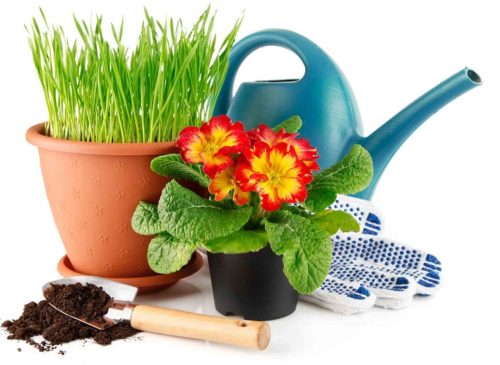
Thus, to grow primulous primary at home or in the open soil, it is important to know the basic preferences of the culture and the peculiarities of it. A reward for works will be a real flower miracle of low bright bugkits beautifully blooming primroses.

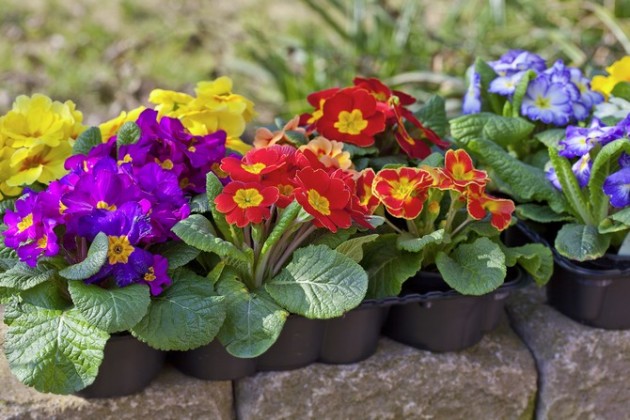
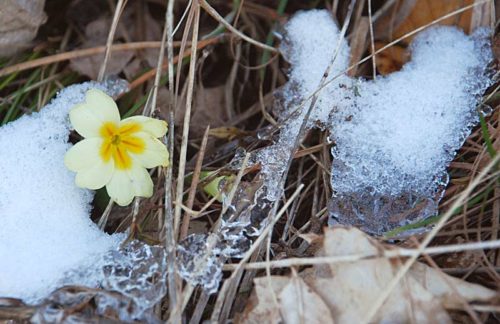

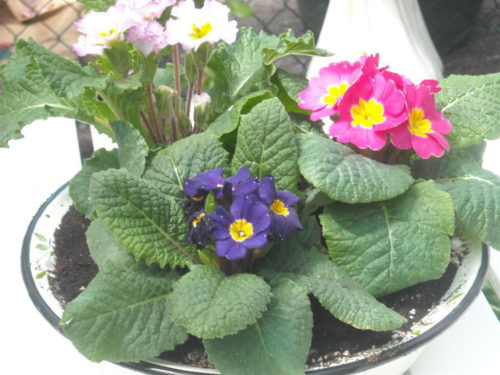
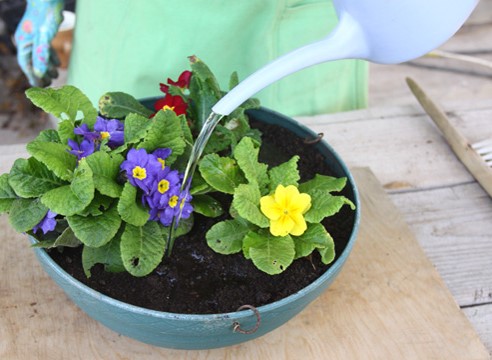


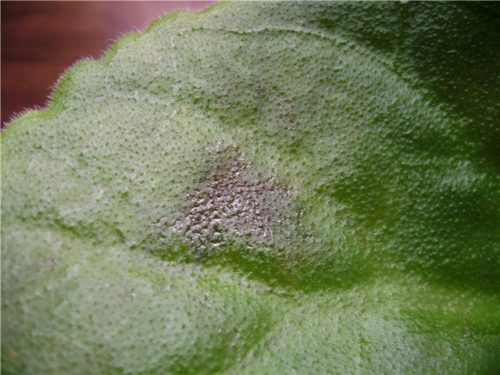
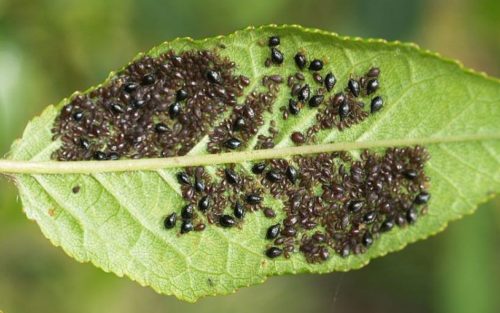

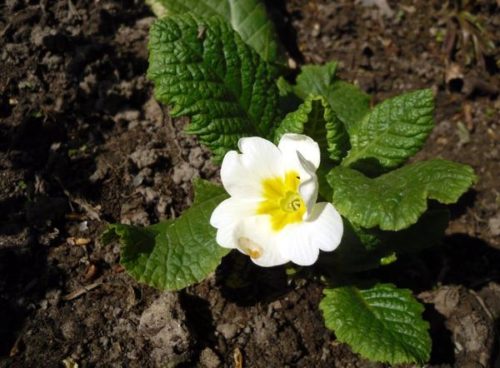

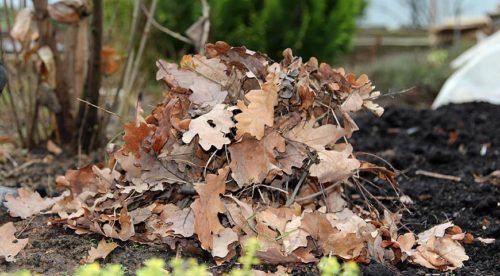

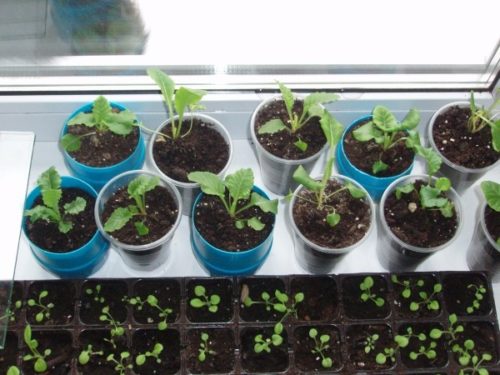
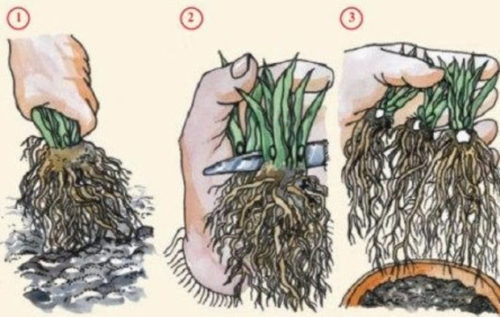
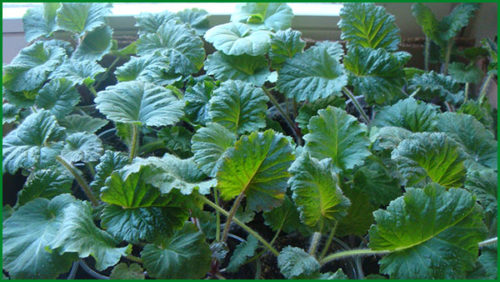
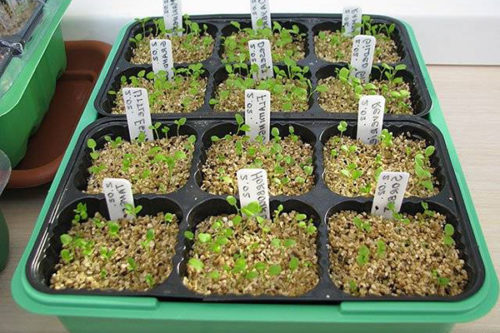

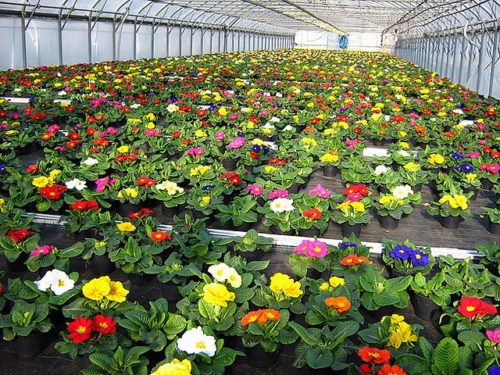
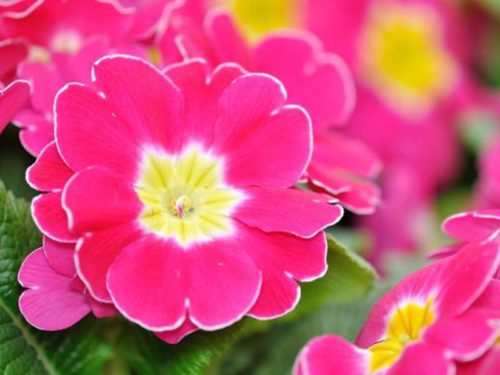
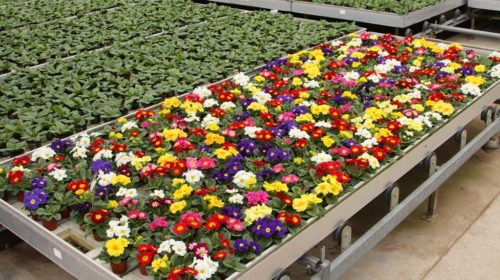
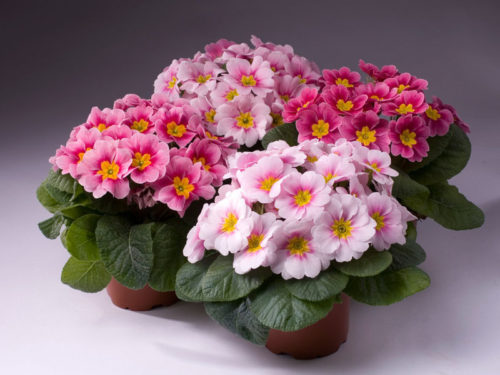


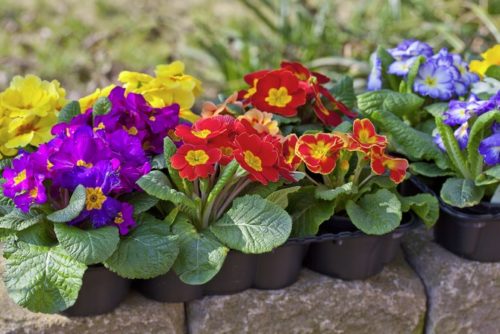

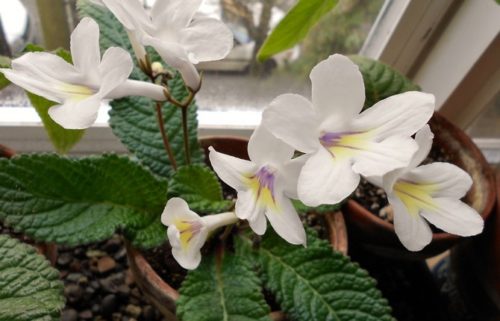

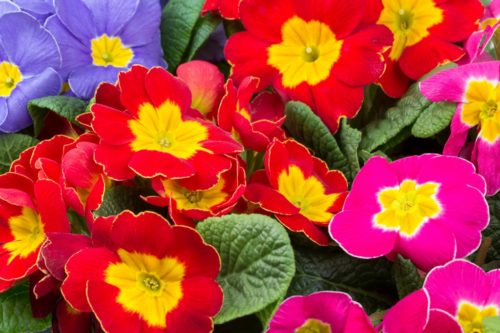
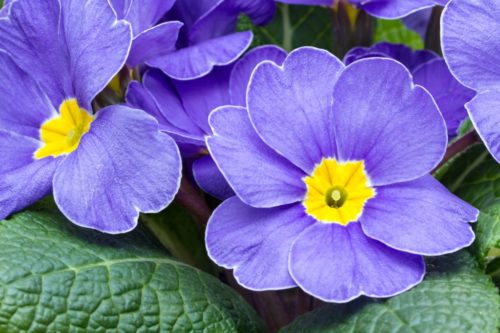
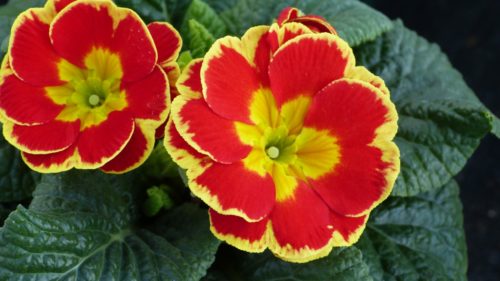
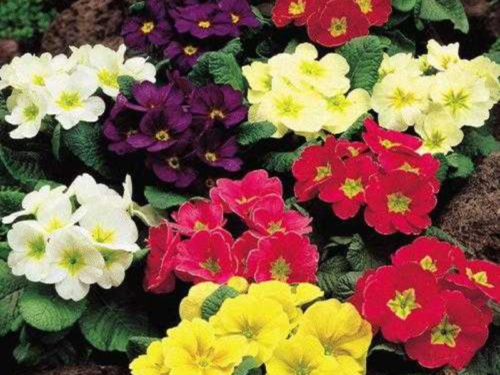















 Start a discussion ...
Start a discussion ...